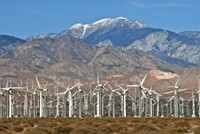Advertisement
Grab your lab coat. Let's get started
Welcome!
Welcome!
Create an account below to get 6 C&EN articles per month, receive newsletters and more - all free.
It seems this is your first time logging in online. Please enter the following information to continue.
As an ACS member you automatically get access to this site. All we need is few more details to create your reading experience.
Not you? Sign in with a different account.
Not you? Sign in with a different account.
ERROR 1
ERROR 1
ERROR 2
ERROR 2
ERROR 2
ERROR 2
ERROR 2
Password and Confirm password must match.
If you have an ACS member number, please enter it here so we can link this account to your membership. (optional)
ERROR 2
ACS values your privacy. By submitting your information, you are gaining access to C&EN and subscribing to our weekly newsletter. We use the information you provide to make your reading experience better, and we will never sell your data to third party members.
Environment
Unleashing The Energy Future
National research council calls for rapid technological deployment
by Jeff Johnson
August 3, 2009
| A version of this story appeared in
Volume 87, Issue 31

A sustained and rapid national commitment to deploy new and existing technologies is needed to put the U.S. on a path to reduce energy use, cut greenhouse gas emissions, and develop new sources of energy, says a report released last week by the National Research Council.
The report, “America’s Energy Future,” is the capstone of five NRC reports examining future U.S. energy needs and is the result of a two-year process, sponsored by the Department of Energy and several U.S. corporations.
“The most important thing I learned from the study,” says Harold T. Shapiro, panel chair and president emeritus of the Woodrow Wilson School at Princeton University, “is the vastness of the energy sector and how it is integrated into every aspect of our lives.”
Consequently, Shapiro warns, the energy system cannot be modernized by a hard-driven Apollo- or Manhattan Project-like program that is remote to most Americans’ lives. It can be transformed only by a long-term, rapid, and sustained national effort, he adds, noting that the next few years will determine what energy options are available for decades to come.
“This is an extremely complex issue, and that was sobering to me,” Shapiro continues. To change the energy system involves transforming physical infrastructure, as well as personal and social habits, he says. For example, “You want to change the U.S. electricity grid? Well, there are not enough cranes in the world to do this tomorrow. You want to meet a goal of getting 1 million advanced cars on the road? You have to remember there are 300 million cars on the road today,” he says.
Despite the vastness of the problem, the report and Shapiro note that enough energy-efficiency technologies already exist today to meet projected U.S. energy consumption growth through 2030. If these technologies were deployed, not a single new power plant will be needed to meet demands between now and 2030.
“There are enormous gains available with efficiency technologies on the shelf today,” Shapiro says, “and by far the most important first step is to put policies and incentives in place to encourage technological deployment.” In particular, he singled out better lighting and windows, more construction insulation, and other technologies that could be driven by stronger building codes.
“Our building codes are way behind Europe’s,” Shapiro says, adding that most energy efficiency gains are inexpensive or could be paid off in a few years by the energy savings.
The panel also urges rapid deployment of carbon capture and sequestration systems at 15 to 20 existing and new coal-fired power plants and construction of five advanced nuclear power plants. The U.S. needs to know within the next half decade whether these systems will work, and their success or failure, Shapiro says, “will make a huge difference in the options for the future.”
The full 650-page report is expected to be available in the next month. Meanwhile, a 200-page summary is online at nas.edu.



Join the conversation
Contact the reporter
Submit a Letter to the Editor for publication
Engage with us on Twitter